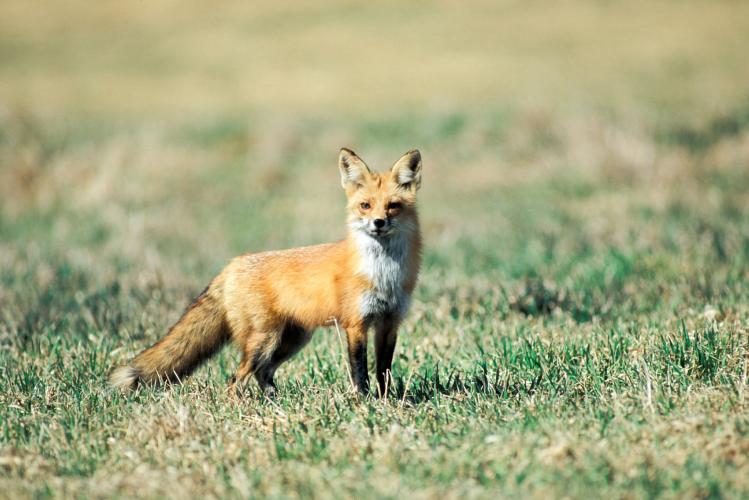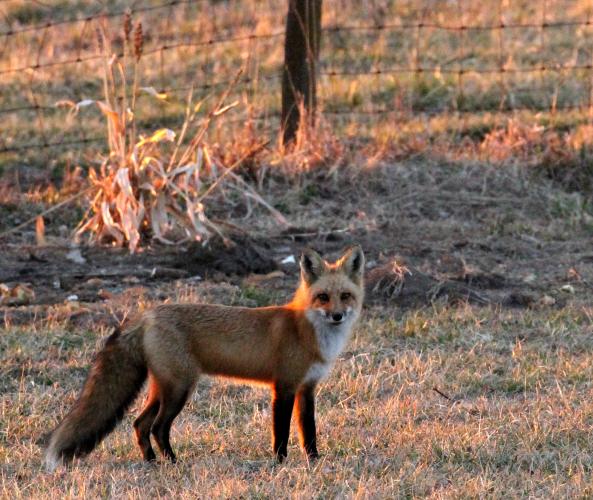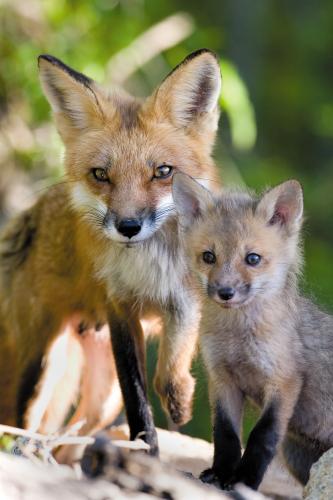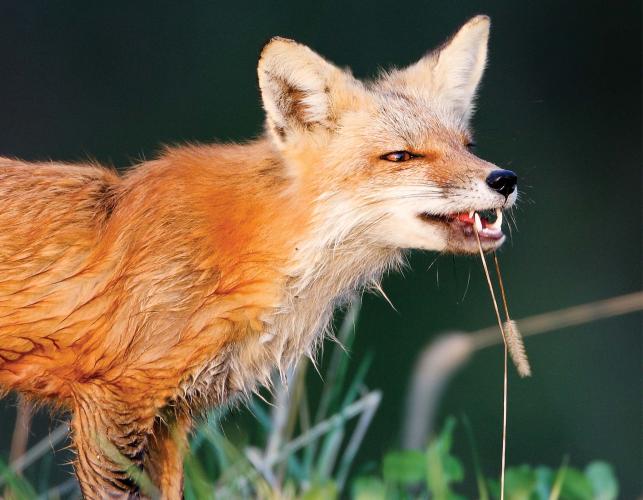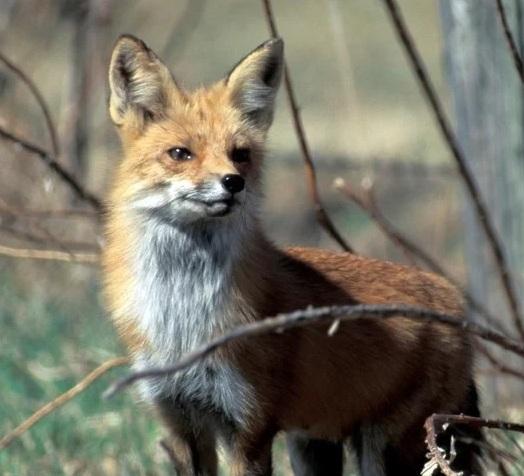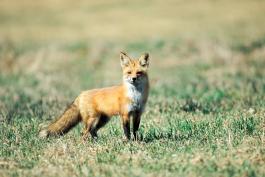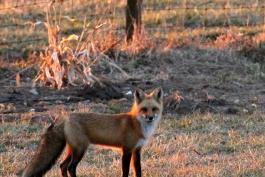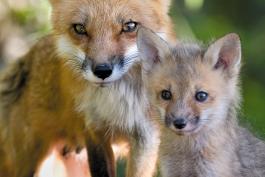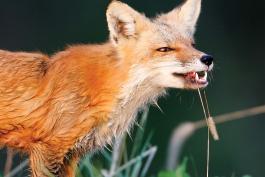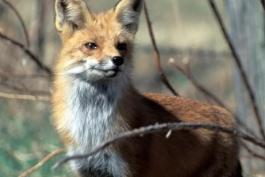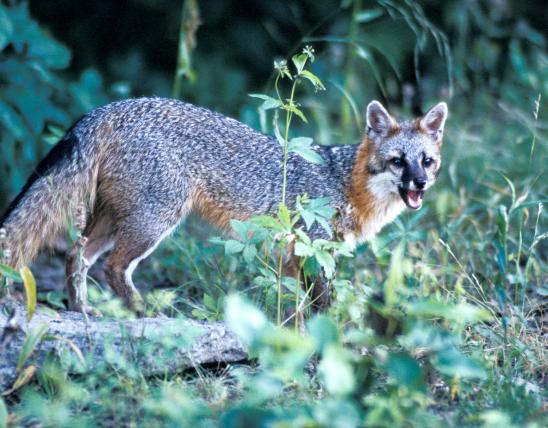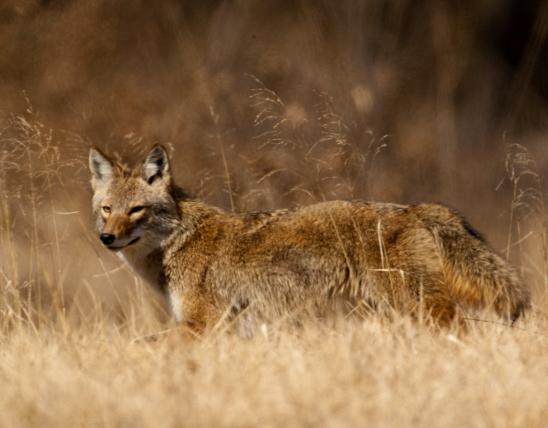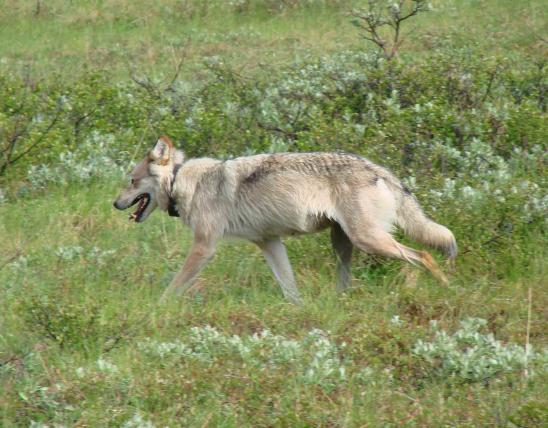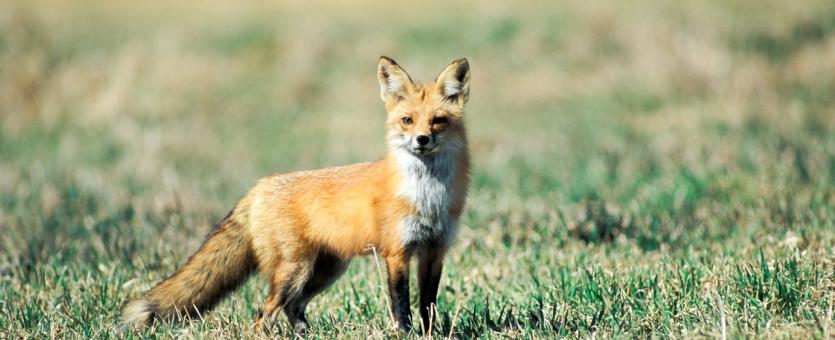
The red fox is doglike in appearance, with an elongated, pointed muzzle; large, pointed ears that are usually held erect and forward; moderately long legs; and a long, heavily furred, bushy tail that is circular in cross section. The fur is long, thick, and soft. The pupil of the eye is vertically elliptical (oval). Upperparts are reddish yellow, becoming slightly darker on the back. The tail is similar but mixed with black and tipped with white. The nose pad is black, and the backs of the ears blackish. The cheeks, throat, and belly are whitish. The legs and feet are black. The iris of the eye is tawny.
In Missouri, nearly all individuals exhibit the typical red color. Black, silver, and other color variations are possible, especially in the commercial fur industry, but the only alternate color phase represented in our state is the very rare cross fox, which has a dark band down the back and across the shoulders. All of the several alternate color phases have a white tail tip.
Similar species: The gray fox (Urocyon cinereoargenteus) is grayish, with a slightly smaller size, a black-tipped tail that is triangular (not circular) in cross-section, a dark brown (not tawny) iris of the eye, and coarse body fur. Both foxes occur statewide, but the gray fox is most common in the Ozarks of southern Missouri while the red fox is more common in the northern and western sections of the state.
Total length: 12½–46 inches; tail length: 11½–16 inches; weight: 7½–15 pounds. Males are slightly larger and heavier than females.

Statewide, but the red fox is more common in the northern and western sections of the state.
Habitat and Conservation
Red foxes prefer the borders of forested areas and adjacent open lands, avoiding dense and extensive forests. During most of the year, red foxes sleep on the ground in a convenient, sheltered spot. During the breeding season, though, they provide a den for the young.
Food
Rabbits, mice, and rats form the bulk of the diet. Additional items include other small wild mammals, wild birds, insects, and only a small amount of plant material (mostly persimmon fruits). Some 18 percent of the diet by volume is made of livestock and poultry, but the economic loss is not as great as it appears because doubtless some of this is carrion. When available, about a pound of meat is eaten at a feeding.
Status
The statewide population has been in a long-term decline and remains at a low level. This long-term decline may be the result of competition with coyotes and bobcats. Continent-wide, red fox populations fluctuate in number, but these are generally local occurrences and not widespread cycles. Such fluctuations are apparently influenced by the abundance or scarcity of the food supply. Disease and parasites could also have an effect.
Life Cycle
The onset of breeding season is indicated by an increased amount of nocturnal barking. Mating may occur from late December to March, but January and February are the usual months. The single annual litter is generally born in March or April. Most litters contain 4–7 kits. The kits begin to come out of the nest when they are about a month old, and at about 10 weeks, they leave the den area for the first time to accompany their parents on hunting trips. The family disperses in the fall. Foxes are chiefly nocturnal but may come out during day, especially at dawn and dusk.
Human Connections
Foxes are trapped for their fur, which is used for trimming, scarves, coats, jackets, and hats. Silver foxes are reared on farms for their fur.
The common name of this animal, “fox” is the Anglo-Saxon name for this animal and refers to its crafty behavior.
In the twenty-first century, hunters still respect and appreciate foxes for their ability to elude. Fox hunting with hounds is considered great sport, and the raising of foxhounds is an accessory business and pleasure. Foxes are also called into gun range with a decoy call that imitates the voice of a frightened rabbit or a small rodent.
Where foxes are numerous, economic loss can be avoided by reducing the vegetation around poultry houses, providing an enclosed area for chickens, having an alert dog to guard them, and trapping the offending fox individuals.
Ecosystem Connections
Foxes feed on rodents and help check these abundant animals.
When food is plentiful, a red fox typically kills more than it eats and buries the surplus in the ground or covers it with grass or leaves. Foxes often capture and store shrews and moles, but they rarely eat them.
Some of the food foxes cache is discovered and eaten by skunks, crows, owls, hawks, or other foxes.
Signs and Tracks
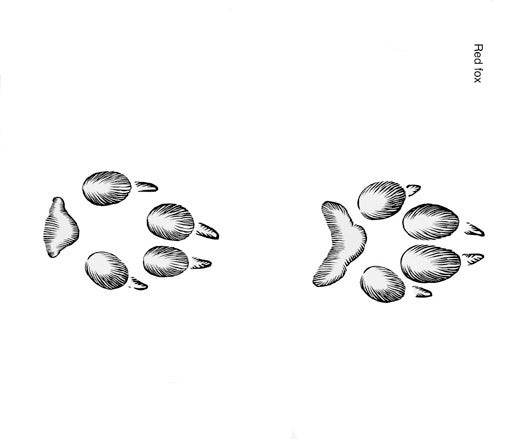
Front track:
- 2–2¼ inches long
- 4 toes
- Oval or even square in overall shape.
Hind track:
- 2 inches long
- 4 toes
- Diamond-shaped overall.
Other notes:
- Foot hair may show in pad marks, making the track not appear sharp.
- Stride is 8–15 inches between prints (trotting).
- The claws leave marks, with the middle two claws most likely to show. The side claws often don’t show.
- Pattern is often nearly straight.
